
The USS Florida nuclear submarine prepares for a special operations crew transfer. Photo courtesy of the US Navy.
On July 26, 1945, Lt. Cmdr. Eugene “Gene” Fluckey was nearly defenseless. Nearing the end of his final war patrol, the skipper of the USS Barb Gato-class submarine had fired nearly all of his ammunition. His torpedoes sank Japanese warships, and his rockets bombarded shoreline targets along Japan’s southernmost Kuril Islands.
A Barb lookout spotted a 150-ton Japanese trawler in the distance; it was steaming right for them. Fluckey didn’t flinch as he turned to his men for a solution. One of his sailors grabbed a case of rifle grenades from his locker. The grenades would be enough to set fire to the vessel and allow a boarding party to commence an assault.
Fluckey ordered his men to battle stations and instructed his 20mm gun crew to provide cover fire as he made his move. The skipper maneuvered his submarine in a synchronized drive-by fashion. Fluckey’s men fired 18 rifle grenades into the trawler’s hull as they swept by.

The USS Barb in San Francisco Bay, near the Mare Island Navy Yard, California on May 3, 1945. Wikimedia Commons photo.
The grenade’s explosions set fire to the vessel, forcing its crew to abandon ship. The warship was damaged but didn’t sink, and the Barb was supposed to sail for Midway at midnight.
Since they couldn’t leave the vessel alone, Fluckey decided his only recourse was to ram the trawler. “Hang on!” the skipper shouted over the radio. And with that, the Barb smashed through the trawler as the enemy vessel’s foremast snapped across the bow. The warship’s starboard side collapsed into itself and began to submerge below the waves.
The dramatic event was among Fluckey’s last as a wartime submarine commander. For this war patrol, he received his fourth Navy Cross. Though spectacular, Fluckey’s actions in the Pacific during World War II weren’t out of the norm. He is one of seven attack-submarine commanders awarded the Medal of Honor.
Submarines of World War II made their mark on warfare. However, submarines have played a larger role in military operations for hundreds of years, including the earliest days of the US Navy.
Related: Sabotage by Boy Scouts: The Only Submarine to Sink A Freight Train
When Were Submarines Invented?
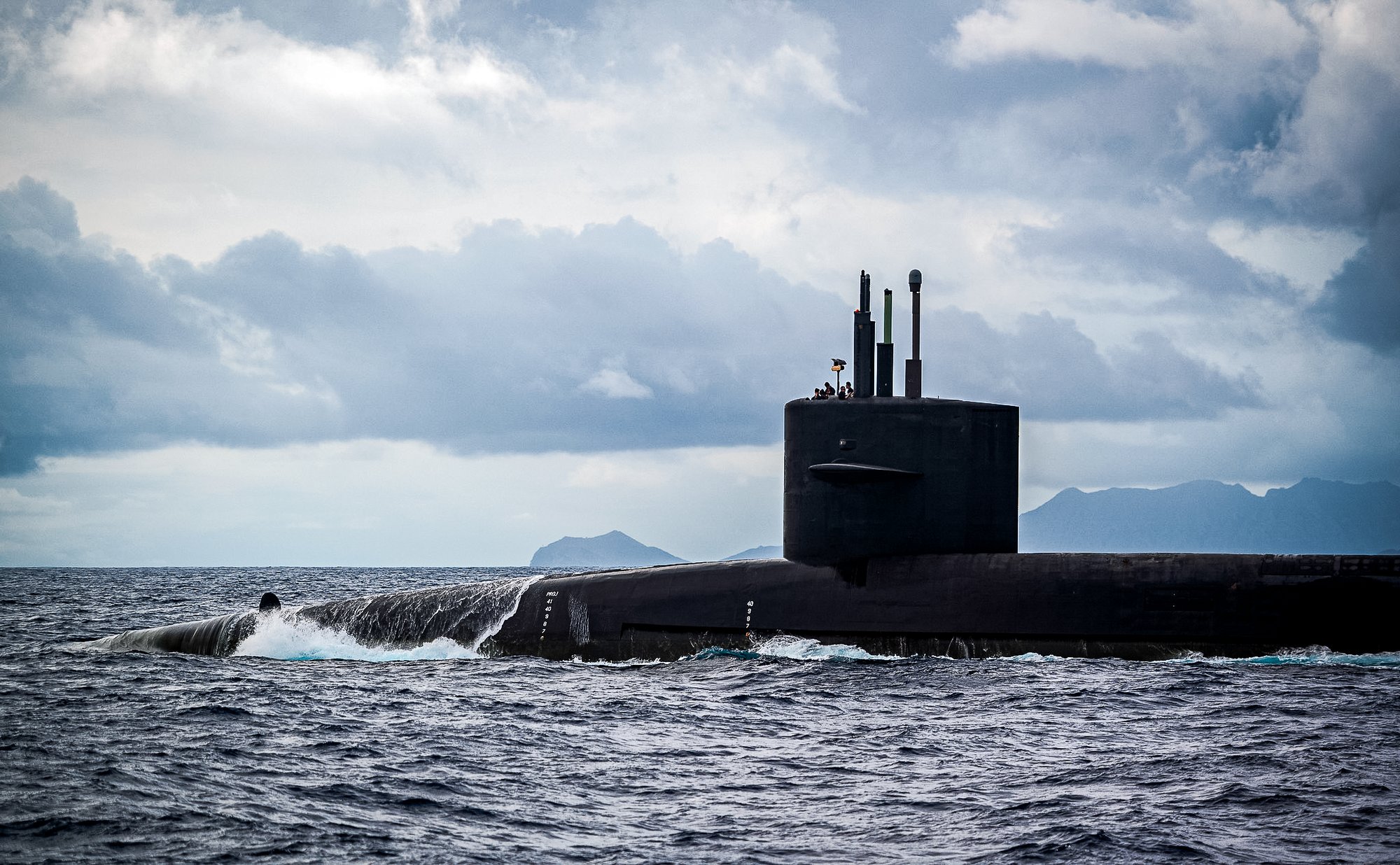
The Ohio-class ballistic-missile submarine USS Henry M. Jackson gets in position to receive a payload of supplies from an MV-22B Osprey in the vicinity of the Hawaiian Islands on Oct. 21, 2020.
According to the Library of Congress, shipbuilders drafted proposals for underwater vessels as early as the late 1500s. However, the first documented submersible designed for combat saw action during the American Revolution. David Bushnell’s hand-propelled submersible could fit one operator and one explosive device. Bushnell called it the “turtle” because of its unique shape.
The turtle submarine failed on three attempts to destroy British ships in New York Harbor. The problem wasn’t detection but rather the machine’s failure to properly attach the bomb to the ship’s hull. Ultimately, the British scuttled the turtle submarine. A modern replica is currently on display at the Connecticut River Museum.
Related: How Billionaire Aviator Howard Hughes Helped the CIA Steal a Soviet Submarine
How Deep Can a Submarine Go?
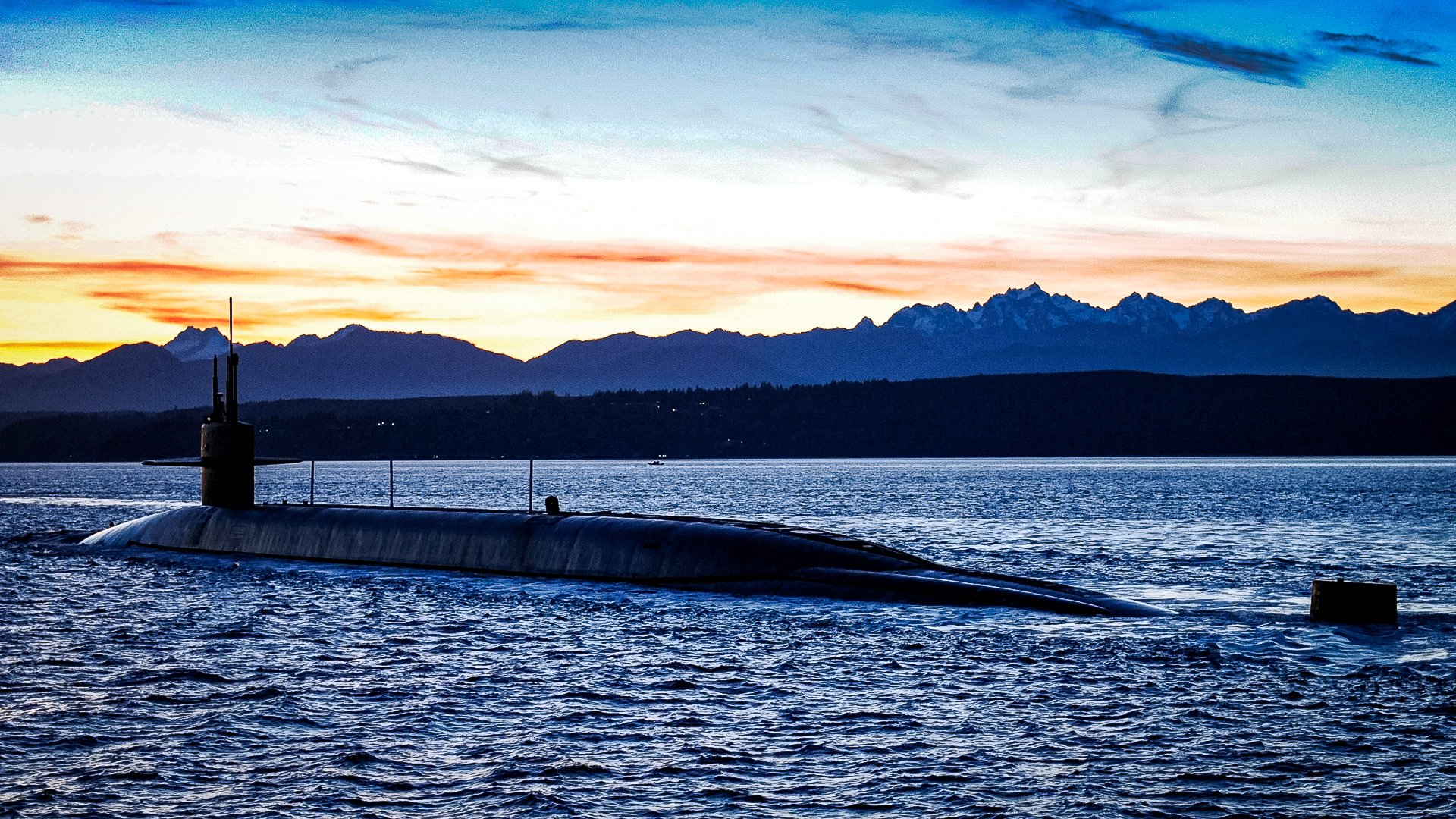
The ballistic-missile submarine USS Nevada transits the Washington State Puget Sound on its way to Naval Base Kitsap-Bangor. US Navy photo by Chief Mass Communication Specialist Ahron Arendes.
The average SCUBA diver can descend to 100 meters and not be in danger of the effects of water pressure. According to the Woods Hole Oceanographic Institution, a nuclear submarine can dive to about 300 meters, which isn’t very far, considering the average depth in the Caribbean Sea is 2,200 meters, or 1.3 miles.
Related: ‘Sleeping Beauty’ — The Mini Frogman Sub That Preceded SEAL Delivery Vehicles
What Is Unrestricted Submarine Warfare?

Navy Divers assigned to Naval Special Warfare Command conduct operations with the Virginia-class fast-attack submarine USS North Carolina off the coast of Oahu, Hawai'i in 2015. US Navy photo by Mass Communication Specialist 2nd Class Alex Perlman.
In World War I, the British Royal Navy enacted a blockade across the North Sea and the English Channel. The so-called British Blockade aimed to restrict the flow of war supplies, food, and fuel into Germany, with the goal of breaking Germany’s will to fight.
Germany retaliated by employing its submarines — or U-boats — to adopt the new tactic of unrestricted submarine warfare. This tactic caused significant resentment among the Allies because it involved targeting military and civilian shipping vessels.
The most high-profile war incident occurred on May 7, 1915, when German submarine U-20 torpedoed the Lusitania passenger liner. Approximately 1,200 men, women, and children — including 128 Americans — were killed. The Germans claimed the Lusitania was carrying war supplies, thus qualifying it as a military target.
The Allies didn’t agree. Fearing that this escalation of violence would prompt America and other neutral Allies to join the war, Germany vowed to spare passenger vessels — but only temporarily.
In 1917, Germany returned to unrestricted submarine warfare, thinking it would help them win the war. It didn’t.
Related: The Maverick of the Sea: How an Undersea Ace Transformed Submarine Warfare
Submarines & Baseball Bats
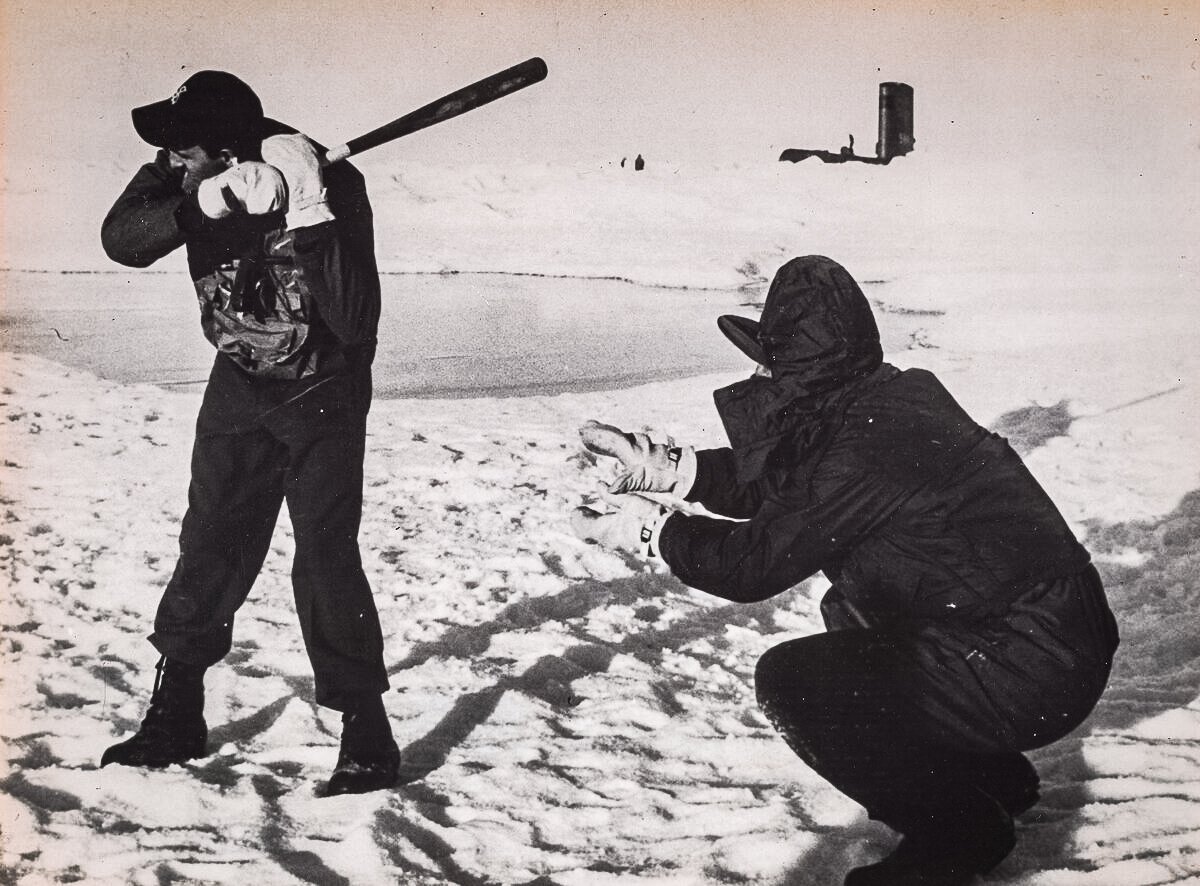
US Navy sailors of the USS Seadragon nuclear submarine play baseball in the snow at the North Pole in August 1960. Photo courtesy of the USS Bowfin Submarine Museum & Park.
On Aug. 25, 1960, the USS Seadragon had just finished charting the Northwest Passage. The historic voyage marked the first time a submarine conducted an underwater transit, which also included a hydrographic survey beneath an iceberg.
After completing the incredible feat, Capt. George Steele II breached the open water next to a nearby ice flow. The commander rewarded the Seadragon’s crew with the first ever baseball game at the North Pole. The crew disembarked the submarine, towing their arctic baseball gear that was previously stashed in the torpedo room.
The sailors marked the pitcher’s mound as close to the geographic North Pole as possible to create some interesting situations. If a batter hit a homerun, he’d run through 24 time zones as he rounded the bases. A line drive to right field would mean the ball would be hit into “tomorrow.” The right fielder could throw the ball back into the infield, or “yesterday.”

A sailor assigned to the USS Louisville submarine holds a Louisville Slugger baseball bat commemorating the submarine's historic role in the Persian Gulf in 1991. US Navy photo by PH1 Richard J. Oriez.
However, the North Pole game isn’t the only interesting connection baseball has with submarines.
On Jan. 19, 1991, the USS Louisville submarine made history by launching the first Tomahawk missile strikes in Iraq. It was the first rocket attack from a submarine since World War II.
When the Louisville returned to its home port in San Diego, California, the crew members were met with a surprise: John W. Hillerich, the president of Louisville Slugger. Hillerich personally gifted Cmdr. Frank Stewart and his crew with custom baseball bats. More than a decade later, a second edition was given to the Louisville crew when they participated in Operation Iraqi Freedom in 2003.
Related: The Confederate Sub That Killed Its Own Sailors and Namesake
How Many Submarines Does the US Have?
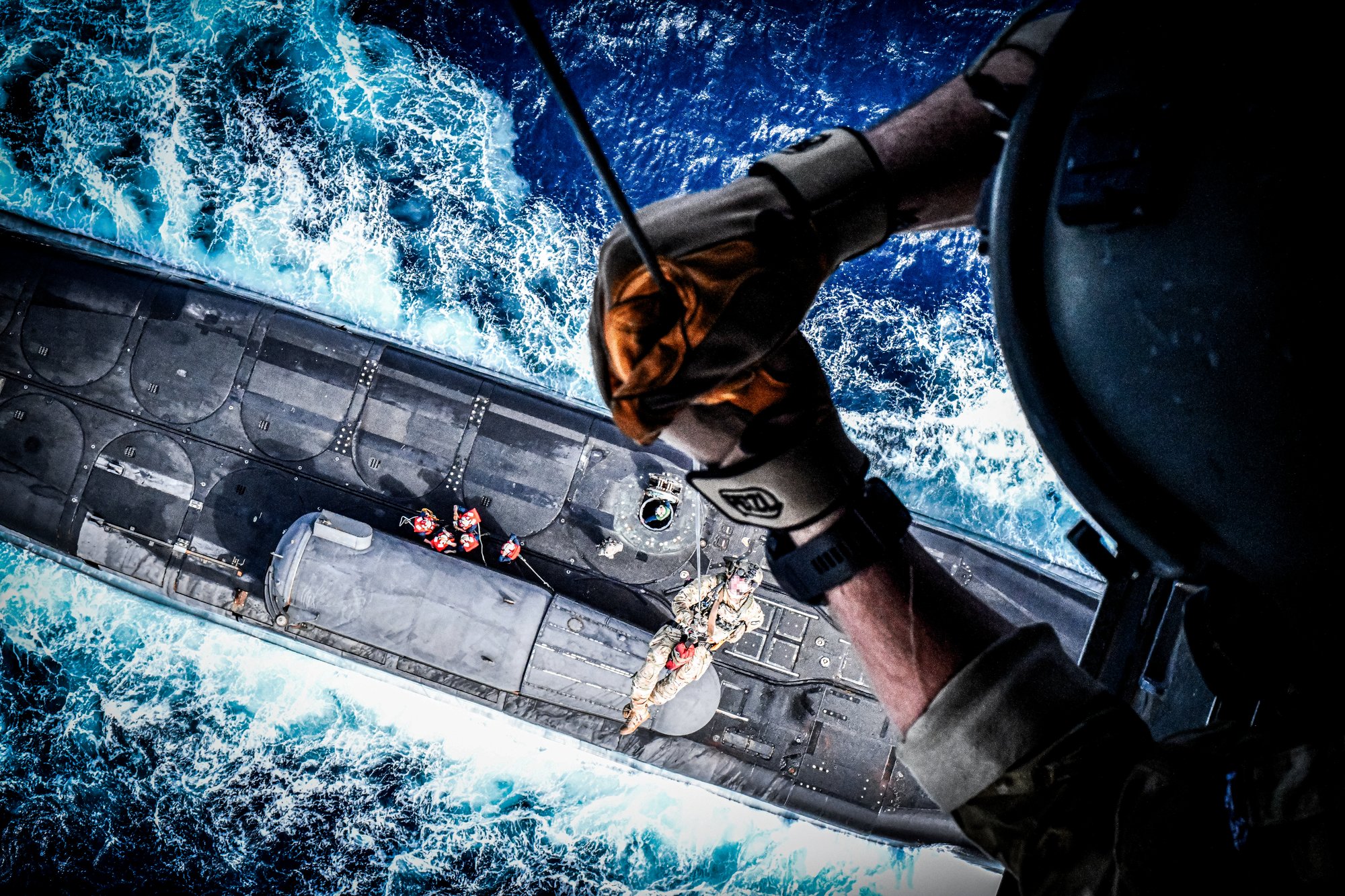
An East Coast-based US Naval Special Warfare operator (SEAL) hoists down to Ohio-class guided-missile submarine USS Florida from a CV-22 Osprey, assigned to 7th Special Operations Squadron, 352nd Special Operations Wing, during a special operations forces interoperability exercise, Feb. 26, 2023. US Navy photo.
The US Navy has approximately 71 nuclear-powered submarines in its fleet, 53 of which are fast-attack submarines. There are three classes of attack submarines in service today: Los Angeles, Seawolf, and Virginia.
All are extremely well armed and perform specific missions. For example, 30 Los Angeles–class submarines are equipped to fire Tomahawk missiles, while the Seawolf-class USS Jimmy Carter supports special operations missions. Carter’s multimission platform aids classified research and development projects as well as support for clandestine SEAL missions.
In addition to the fast-attack submarines, the US Navy also possesses 14 ballistic-missile submarines. These submarines support President Dwight D. Eisenhower’s original vision of the Fleet Ballistic Program he ordered the creation of in 1955.
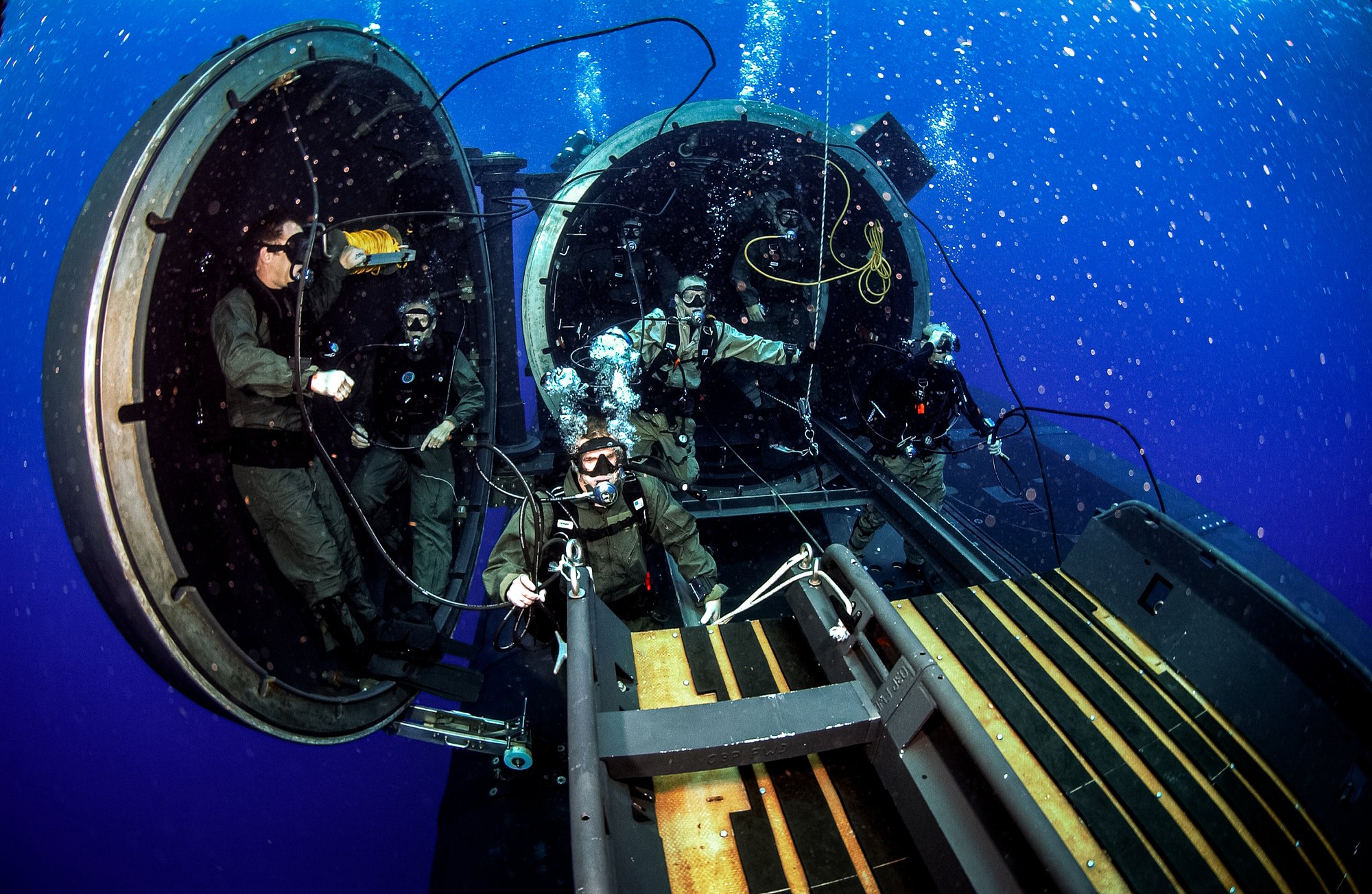
Navy divers and special operators attached to SEAL Delivery Team (SDV) 2, perform SDV operations with the Ohio-Class nuclear-powered guided-missile submarine USS Florida for material certification. Material certification allows operators to perform real-world operations anytime, anywhere. US Navy photo.
The 14 ballistic missile submarines, or “boomers,” have served as one-third of America’s nuclear triad to deter potential adversaries from warfare. These submarines carry more than half of America’s nuclear arsenal completely underwater. Each Ohio-class ballistic submarine carries a maximum of 20 independently targeted warheads and Trident II D5 missiles.
The remaining four guided-missile submarines underwent conversions to support conventional land-attack missions. Every guided-missile submarine carries up to 154 Tomahawk land-attack cruise missiles. It has space to store new missiles, uncrewed aerial vehicles, and crewless undersea vehicles within its missile tubes. Two of the missile tubes also serve as lock-out chambers, which allows for clandestine insertion and retrieval of personnel, typically SEALs or divers.
Read Next: From the Silent Service to the Presidency: The Life of Jimmy Carter

Matt Fratus is a history staff writer for Coffee or Die. He prides himself on uncovering the most fascinating tales of history by sharing them through any means of engaging storytelling. He writes for his micro-blog @LateNightHistory on Instagram, where he shares the story behind the image. He is also the host of the Late Night History podcast. When not writing about history, Matt enjoys volunteering for One More Wave and rooting for Boston sports teams.
BRCC and Bad Moon Print Press team up for an exclusive, limited-edition T-shirt design!
BRCC partners with Team Room Design for an exclusive T-shirt release!
Thirty Seconds Out has partnered with BRCC for an exclusive shirt design invoking the God of Winter.
Lucas O'Hara of Grizzly Forge has teamed up with BRCC for a badass, exclusive Shirt Club T-shirt design featuring his most popular knife and tiomahawk.
Coffee or Die sits down with one of the graphic designers behind Black Rifle Coffee's signature look and vibe.
Biden will award the Medal of Honor to a Vietnam War Army helicopter pilot who risked his life to save a reconnaissance team from almost certain death.
Ever wonder how much Jack Mandaville would f*ck sh*t up if he went back in time? The American Revolution didn't even see him coming.
A nearly 200-year-old West Point time capsule that at first appeared to yield little more than dust contains hidden treasure, the US Military Academy said.












